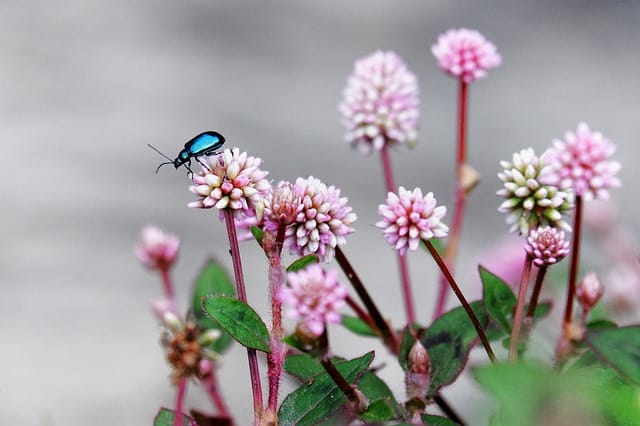Promoting pollinators: Flower beetles
Flower beetles, also known as scarab beetles, are often underrated when it comes to their role as pollinators in ecosystems

In this article:
- Introduction: Understanding Flower Beetles as Pollinators
- Characteristics and Diversity of Flower Beetles
- Evolution of Flower Beetle Pollination Strategies
- Flower Beetle Anatomy and Adaptations for Pollination
- Types of Flowers Attractive to Flower Beetles
- Behavioral Patterns of Flower Beetles as Pollinators
- Interactions with Other Pollinators: Competition or Cooperation?
- Importance of Flower Beetles as Pollinators in Ecosystems
- Threats and Challenges Facing Flower Beetle Pollinators
- Conservation Efforts for Flower Beetles and their Habitats
- Future Research Directions: Unraveling the Role of Flower Beetles in Pollination Networks
- Conclusion: Recognizing the Essential Role of Flower Beetles as Pollinators
Introduction: Understanding Flower Beetles as Pollinators
Flower beetles, also known as scarab beetles, are often underrated when it comes to their role as pollinators in ecosystems. While bees and butterflies receive much attention, flower beetles play a crucial and often overlooked role in pollination. This article aims to shed light on the ecology, behavior, and importance of flower beetles as pollinators.
Characteristics and Diversity of Flower Beetles
Flower beetles belong to the family Scarabaeidae, which is one of the largest and most diverse families of beetles. They display a wide range of colors, patterns, and sizes, making them visually striking insects. This section will explore the different characteristics and diversity of flower beetles found in various regions.
Evolution of Flower Beetle Pollination Strategies
The evolution of flower beetle pollination strategies is a fascinating field of study. Flowers have evolved various mechanisms to attract and manipulate flower beetles for effective pollination. This section will delve into the co-evolutionary relationships between flower beetles and the flowers they pollinate.
Flower Beetle Anatomy and Adaptations for Pollination
The anatomy and adaptations of flower beetles are crucial to understanding their role as pollinators. From mouthparts to specialized body structures, flower beetles possess unique adaptations that enable them to interact with and pollinate flowers efficiently. This section will explore the intricate adaptations of flower beetles that facilitate pollination.
Types of Flowers Attractive to Flower Beetles
Flower beetles are known to be attracted to specific types of flowers. Understanding the flower preferences of these beetles is essential for promoting their presence and enhancing pollination services. This section will discuss the types of flowers that are particularly attractive to flower beetles.
Behavioral Patterns of Flower Beetles as Pollinators
Observing the behavioral patterns of flower beetles can provide insights into their role as pollinators. This section will explore the foraging behaviors, mating patterns, and other behavioral aspects of flower beetles that contribute to their efficiency as pollinators.
Interactions with Other Pollinators: Competition or Cooperation?
Flower beetles coexist with various other pollinators, including bees, butterflies, and birds. Understanding the interactions between flower beetles and other pollinators is crucial for comprehending the dynamics of pollination in ecosystems. This section will discuss whether these interactions involve competition or cooperation among pollinators.
Importance of Flower Beetles as Pollinators in Ecosystems
Flower beetles play a significant role in ecosystem functioning and plant reproduction. This section will highlight the importance of flower beetles as pollinators and the ecological services they provide in maintaining biodiversity, plant communities, and overall ecosystem health.
Threats and Challenges Facing Flower Beetle Pollinators
Like other pollinators, flower beetles face numerous threats and challenges that impact their populations. Habitat loss, pesticide use, climate change, and invasive species are just a few of the factors affecting flower beetles as pollinators. This section will address the major threats and challenges facing flower beetle pollinators today.
Conservation Efforts for Flower Beetles and their Habitats
Efforts to conserve flower beetles and their habitats are crucial for ensuring their long-term survival as pollinators. This section will highlight the ongoing conservation initiatives, including habitat restoration, establishment of protected areas, and public awareness campaigns aimed at promoting the conservation of flower beetles.
Future Research Directions: Unraveling the Role of Flower Beetles in Pollination Networks
While we have made progress in understanding the role of flower beetles as pollinators, many aspects remain unknown. Future research should aim to unravel the intricate relationships between flower beetles and other pollinators within complex pollination networks. This section will explore potential research directions to enhance our understanding of flower beetles in pollination ecology.
Conclusion: Recognizing the Essential Role of Flower Beetles as Pollinators
Flower beetles are important pollinators that contribute to the reproduction and survival of numerous plant species. Recognizing their essential role in pollination is vital for effective conservation and management of ecosystems. By promoting flower beetles and their habitats, we can ensure the sustainability of pollination services in the face of ongoing environmental challenges.
